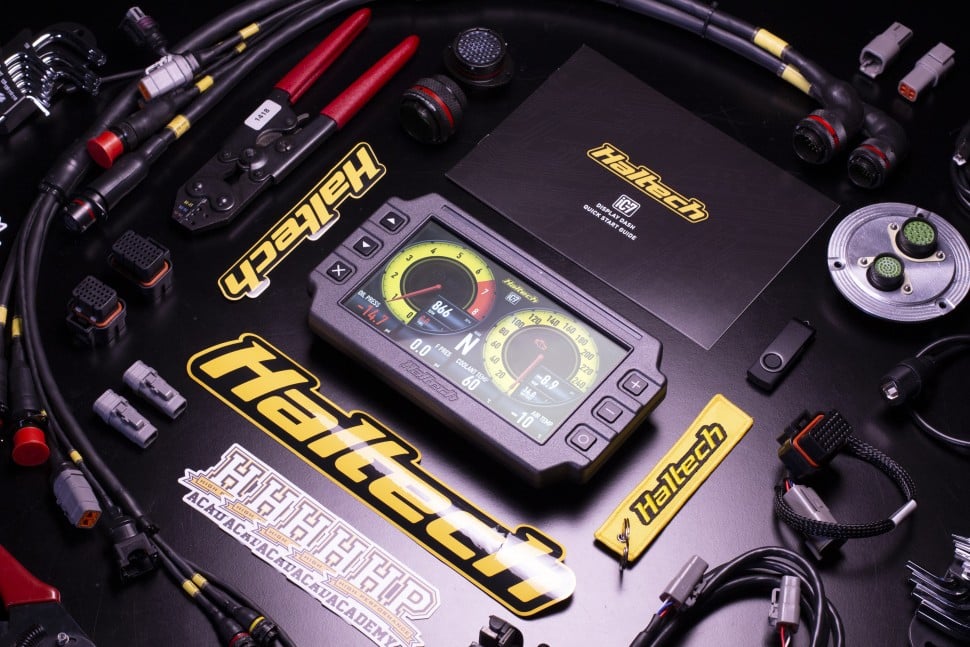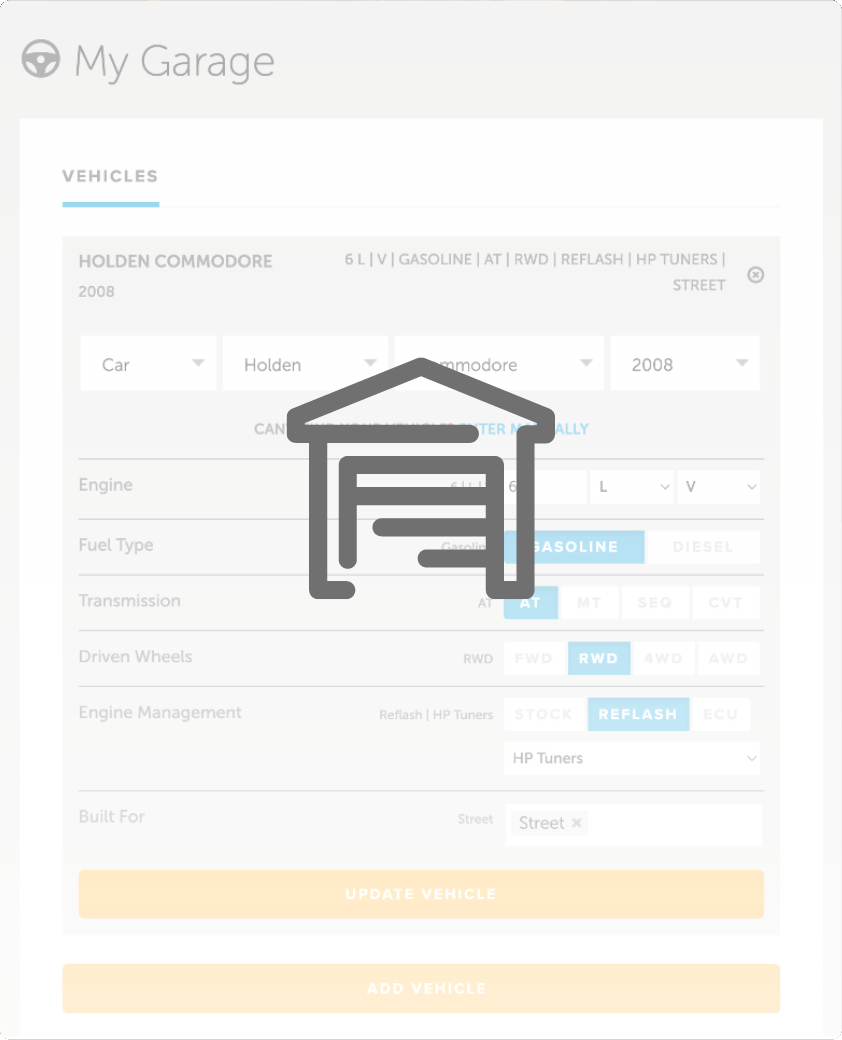| 00:00 |
Although we did make use of some surface modelling in the last module, the turbo manifold we worked on was a part with mechanical functions and clear geometric forms, lending itself to solid modelling techniques.
|
| 00:12 |
But that's likely not going to be the case for every part we scan for automotive projects.
|
| 00:18 |
Body panels and interior panels for example are often very thin compared to their overall size and can involve complex curves, meaning curves in all directions, so no matter what direction we view the surface from, we'll see a curve.
|
| 00:33 |
Parts like this lend themselves much more to surface modelling when it comes to the original design or specific to our interests, reverse engineering.
|
| 00:42 |
Again, this is a 3D scanning course so we'll assume you have the fundamental CAD skills and therefore we'll be glossing over the basics.
|
| 00:51 |
Surface modelling is also a hugely complex topic, it's just not practical or effective to cover all the required information in this course, so this will be more of an introductory look to get you started and we'll dive into more detail in the worked examples.
|
| 01:06 |
As with most things in CAD, there are a lot of different approaches to achieving something with no right or wrong way, just some that are more efficient and effective than others.
|
| 01:16 |
For this application we'll look at three primary approaches using an example of the custom wide body front fender that we scanned from our Honda CR-X project.
|
| 01:26 |
The first approach is going to be using the surface modelling toolbar in Fusion.
|
| 01:30 |
But to get started we're actually going to jump into the mesh toolbar and we're going to create mesh section sketches along the length of the body panel.
|
| 01:44 |
So, in most cases a tighter spacing of these mesh sections along the body panel is going to result in a tighter and closer fit , but the requirements here are going to depend on the complexity of the model that we're trying to match.
|
| 01:59 |
So, these need to be created one by one in Fusion , but in some other software like Peel.CAD we can actually create multiple planes at once with control over the spacing of these sections.
|
| 02:11 |
Remembering that if we are working in Peel.CAD then we need to export the curve entities as DXF so we can then bring those into our CAD software if we can't transfer them directly over.
|
| 02:35 |
So, we can see now that this has been a fairly time consuming process, but we've been able to fit mesh sections divided up along the length of the body panel.
|
| 02:45 |
And naturally the next step here is also going to be quite time consuming.
|
| 02:51 |
And what we're going to do is we're going to fit curves to the mesh sections.
|
| 02:55 |
So, if we open fit curves to mesh sections here, we're going to actually fit splines to the mesh section and just start on this kind of top edge here and move down, just placing the fit points essentially on the start and finish and then on any sharp corners there and we can see that this has fit a curve nicely to that mesh section.
|
| 03:23 |
Then it's just going to be rinse and repeat for that along the length of the body panel.
|
| 04:08 |
So, after that quite time consuming process, we now have splines fitted all along the length of the body panel.
|
| 04:17 |
So, next what we can do is jump into the surface modelling toolbar and select our loft tool.
|
| 04:22 |
Then it's just a matter of using the chain selection and then selecting all of the splines along the length and that will just basically create a lofted surface between them.
|
| 04:38 |
But there's something I just want to note here, if we hide the mesh body, we can see that we have a bit of a crease here where we're transitioning from this kind of flat part of the fender to the actual wheel arch.
|
| 04:55 |
So, again a little way of getting around this, if we just backtrack slightly to about there, we'll take the chain selection off.
|
| 05:07 |
So, basically because we have divided these splines up by dropping the fit points onto the sharp edges of the fender in this case, we can just select the parts of the spline that are on only the fender and then we'll come back and do the wheel arch separately soon.
|
| 05:30 |
So, we're just working along here, selecting all the profiles that we want to use.
|
| 05:42 |
Once we've got to the end there, we can just create that new surface body.
|
| 05:46 |
Then what we're going to want to do in this case is show the sketches that it's hidden again.
|
| 05:54 |
And then now we're going to create another loft just of the actual wheel arch.
|
| 06:04 |
And then again once we've selected those, we can just hit OK to finish that loft.
|
| 06:09 |
We'll just hide our sketches for now so we can clearly see what we've done.
|
| 06:14 |
So, you can see that that is a pretty good representation of the surface, it's definitely not perfect, there's some wrinkles in it.
|
| 06:23 |
We have kind of captured the overall shape compared to the original mesh body.
|
| 06:28 |
Now, the issue here is we have these two different surfaces, but what we can do is we can just stitch those together and then if we just adjust the tolerance setting to kind of fill up that gap that's highlighted green between them, then we can stitch those into a single surface body.
|
| 06:48 |
So, naturally we could use a different spacing of those mesh section sketches, we could change the splines a little bit if we wanted to modify the body slightly or we could come back and change the shape and thicken it into a solid body.
|
| 07:02 |
Alternatively, after some more processes, for example smoothing it out and addressing all these different edges and everything down here, we could use this surface to split a extruded block for example and essentially we'd be able to create a mould for the part that could be 3D printed or machined from some type of low density material like a foam and then we could reproduce this fender as a composite part from the likes of fibreglass or carbon fibre for example.
|
| 07:33 |
Again, we're not going to give a demo of all the different CAD tools here, the important thing is just using surface modelling tools to copy the mesh so let's move on.
|
| 07:42 |
So, let's just hide what we've done so far and then we're going to move on to discuss the second of the three approaches that we're going to discuss in this module.
|
| 07:51 |
And essentially that's going to be using the forms toolbar in Fusion.
|
| 07:56 |
So, this isn't an area that we've touched on before so let's get the basic idea first.
|
| 08:01 |
Form modelling is a direct modelling method as opposed to parametric.
|
| 08:05 |
And this means we have the freedom to push, pull and form the points, edges and the face of the surface that we create without capturing history.
|
| 08:14 |
Although in Fusion this can be a step in an overall parametric approach.
|
| 08:19 |
Think of it like one non parametric step in a timeline of parametric steps.
|
| 08:24 |
This form modelling is also commonly called T-spline modelling.
|
| 08:28 |
It essentially uses a mathematical model to define surfaces and the result being great flexibility, but also precision in modelling complex curved surfaces.
|
| 08:38 |
So, let's have a look at doing this with our CRX fender and the basic process looks kind of like this.
|
| 08:44 |
We start using the face tool to create faces with the object snap preference selected so we can snap to the mesh body.
|
| 08:52 |
And the initial stages are really just roughing out the basic kind of form of the shape.
|
| 08:59 |
So, we want to keep the number of faces to a minimum.
|
| 09:02 |
For our CRX fender here we're just going to create two main faces to follow the kind of core structure of the fender.
|
| 09:16 |
We're just ignoring the wheel arch for now.
|
| 09:19 |
So, something that we just want to consider before we move on is that there are different view modes for the form toolbar.
|
| 09:27 |
So, the display modes here, at the moment we are looking at it in the smooth display, but generally we want to work in the box display here so we can move these control points a lot easier.
|
| 09:40 |
And there will be quite a big difference between the two display modes at the start until we get a more refined and detailed part where they'll start to become more and more similar.
|
| 09:53 |
So, while we work in box display though, it is good to kind of constantly check back to the smooth display because that will be showing what the actual finished surface will look like.
|
| 10:05 |
So, that's just something to keep in mind.
|
| 10:07 |
The other mode here is the control frame display.
|
| 10:10 |
So, that's essentially just going to show us if we turn on the edges here, the box display essentially over top of the smooth display.
|
| 10:21 |
So, that can be helpful as well depending on how you like to view your model.
|
| 10:26 |
So, what we want to do from here is essentially refine the form.
|
| 10:30 |
So, the way we do this is by inserting edges, points or subdividing the faces like we'll do here and just click those faces and we can see subdivided those in this case into four separate faces, we'll just hit OK.
|
| 10:45 |
Then from there we can use the modify tool and essentially just start to drag these points into alignment with the mesh body.
|
| 11:02 |
This pull function under the modify tab here essentially allows us to quickly snap the points from the box display to the mesh.
|
| 11:13 |
So, that's a nice quick way of doing this work.
|
| 11:21 |
So, the process from here is essentially just continuing to refine the surfaces until we can fit them closely to our mesh body.
|
| 11:44 |
So, again as you can see this is a really time consuming process , but we can continue to refine this by fitting edges and points and pulling those into alignment with the mesh until we kinda get something that we're pretty happy with.
|
| 11:57 |
We can see at this point there's a lot more that could be done here, but if we just hide the mesh and hit Alt 3, swapping to the smooth display, then we can see that we've got a pretty good smooth example matching the rough body shape of the main part of the fender here.
|
| 12:18 |
So, the next step, what we're going to do is just skip forward and we're going to start to create that wheel arch.
|
| 12:24 |
So, we're going to create the wheel arch here with a cylinder.
|
| 12:27 |
So, let's select the cylinder tool and then to start this we're essentially going to sketch a circle on a plane and just try to line this up roughly with the wheel arch here.
|
| 12:41 |
So, let's just place a cylinder there like that.
|
| 12:44 |
And if we look at this from the side we can see we've got four height faces and eight diameter faces.
|
| 12:51 |
For the height faces we're just going to make this one, cos that's all we really need, we're just trying to match the kinda inner arch lip here for now.
|
| 13:00 |
And then for the diameter faces we're just going to set this to 30 because in this case we want quite a lot of resolution, we're going to remove a lot of the faces anyway.
|
| 13:11 |
So, just to get started we will hit OK on that.
|
| 13:17 |
We'll just jump into our modify tool and view right on again.
|
| 13:22 |
And select the body being the new cylinder and for now we're just going to kinda drag this roughly into place in the centre of the arch there.
|
| 13:35 |
Then I'm also just going to reduce, scale it slightly down to just try to match the diameter or the curve of that arch a little bit better and that looks pretty good right there.
|
| 13:51 |
From the side what we're going to do is we're just going to drag this into alignment with the mesh.
|
| 14:03 |
And we're going to do the fine tuning and adjustment of this in just a moment.
|
| 14:09 |
Just hit OK on that for now.
|
| 14:12 |
And then what I'm going to do is just delete basically everything that I don't need out of here.
|
| 14:20 |
So, anything above that point is not needed.
|
| 14:26 |
Then we'll jump back into the modification tool.
|
| 14:31 |
Now, at this point we can just put our selection filter back to all so we can select faces, edges and points.
|
| 14:40 |
So, if we double click on an edge it will just kinda do a chain selection to every point that is connected there.
|
| 14:49 |
And then what we can do on this edge at least is just bring it right back in so it's just quite a narrow strip cos that's really all we need in this case.
|
| 15:01 |
And then what we're going to do is just drag the other edges into alignment with our mesh as it kind of tapers back towards the rear of the vehicle here.
|
| 15:14 |
So, bit by bit we're just going to pull this into alignment with the mesh.
|
| 15:25 |
And it's always best to just be working in two dimensions so we're just dragging it straight along one line rather than trying to move the mesh kinda in all three dimensions at once.
|
| 15:37 |
Or move the control points in all three dimensions at once because it just gets a little bit trickier there to manage where everything is.
|
| 15:45 |
On this last one I'm just going to pull that down and then move that out.
|
| 15:58 |
So, now we have that kinda inner lip of the arch there matching what we've got on the mesh.
|
| 16:05 |
So, the next step here is going to be creating this face here and then we're going to move into creating the rest of the arch.
|
| 16:12 |
So, first what we're going to do, jump back into the modification tool, double click that edge to chain them all together.
|
| 16:19 |
And then what we're going to do is on our keyboard, if we're working on a Microsoft like I am, we're going to hold CTRL and ALT, but on a Mac I think it is OPTION and COMMAND.
|
| 16:30 |
And then what we're going to do is just drag this up.
|
| 16:34 |
And what you can see here is this is basically created what would be the equivalent to a flange in our sheet metal modelling tools.
|
| 16:43 |
But we've just got this, extruded this other edge here and that's created a crease in the part.
|
| 16:49 |
So, a nice tight bend here rather than a kind of gentle bend that follows the control points there like we had on the original body.
|
| 17:02 |
So, if we just jump back into viewing this straight on, look at the mesh, we wanna match this to the surface, but what I'm going to do is just pull this down slightly and then I'm going to use the scale tool, which is here and that will scale in both directions and just drag that out and we can see then how we can kind of use both of these together to basically just match the actual profile.
|
| 17:35 |
But again, we're going to do a little bit more fine tuning like we did before as well.
|
| 17:41 |
So, now it's just a matter of dragging all of these points back into alignment with the mesh.
|
| 17:48 |
So, we'll work through that and then we'll move on to creating the other part of the wheel arch.
|
| 18:16 |
So, like always, we just kind of swap between box display and curve display and now that we have two different form bodies, we need to select, which one we're moving between.
|
| 18:26 |
But we just want to switch between those modes to make sure we're kind of roughly getting what we want in of course the curve display, because that's what the final product is going to look like.
|
| 18:37 |
So, now that we are pretty happy with that kind of flange there on the end of the wheel arch, we're going to move to the next step, which is creating kind of this main bulk of the wheel arch here.
|
| 18:50 |
So, now what we're going to do is jump back into the modify tool, select that entire edge again and then again hold control and alt and now what we're going to do is pull that edge up there and we'll just hide the mesh.
|
| 19:06 |
And what we wanna do is basically line that top edge up with this kind of fold along the upper edge of the fender there.
|
| 19:17 |
Once we're pretty happy with the location of that, what we can do then is just set the pivot point using this here, set that on that top edge, lock in that pivot point and then we can rotate that edge around, so it comes a little bit closer to alignment with the outer kind of fender surface there.
|
| 19:42 |
But again of course we're going to drag these all into alignment with our mesh, make sure it all fits nicely.
|
| 20:13 |
So, now that we're happy with the shape of the wheel arch, the tricky part is going to be joining this back into the other body.
|
| 20:20 |
So, first of all we'll just switch back over to box display on both the parts and then what we're going to do is fire up the insert point tool.
|
| 20:34 |
Then if we view from the side, what we're going to start to do is just set up a few points to create essentially new edges along here.
|
| 20:55 |
So, once we've got a few of those points in, if we hit OK and we just hide the wheel arch, we can see that we've kind of split up this face and what we're going to start by doing is just deleting those elements out of the form for the fender.
|
| 21:15 |
So, the next step here is going to be using the weld vertices tool to essentially join the vertices from the wheel arch back into the base fender part here.
|
| 21:26 |
And in this case we need an equal number of vertices on each part, which I think we have in this case so let's get started welding those back together.
|
| 21:44 |
So, now if we jump back into the smooth display mode, we can see that we have a shape , which essentially matches the mesh of our CRX front wheel arch.
|
| 21:57 |
Obviously there's some little differences here and I'll just explain these now.
|
| 22:01 |
So, if we jump back into the box display, we can see that our control points form these triangular faces in a few instances.
|
| 22:11 |
And basically we want to avoid those because the triangular faces limit you to flat surfaces in the curved display.
|
| 22:20 |
And they also end up with these little star points here and basically what happens is we end up with inaccuracies, wrinkles and imperfections in our surface when we're finished.
|
| 22:33 |
So, what could be done here is we could insert more edges and have a bit of a play around with these faces and basically try to change them all back to quads and ideally have them as uniform size as possible because that's going to give us the best results.
|
| 22:49 |
So, reverse engineering a part like this using the forms toolbar is an incredibly time consuming process, but the results and the ability to modify the design are unmatched compared to the other processes that we'll cover.
|
| 23:03 |
Again, we're not going to show the whole process here just because of the length and complexity in this module and the amount of repetition.
|
| 23:12 |
As you can imagine it's just a lot of creating edges, moving things around, dragging them into a line with the mesh, but we'll be sure to cover this more in some worked examples to do it a little bit more justice.
|
| 23:24 |
So, once we're happy with what we've got and we hit finish form, we can see that that is converted into a surface body and we can work with it from there like we did before towards something that's actually manufacturable.
|
| 23:38 |
Let's now take a look at our third and final approach, which is converting our mesh back into a form or T spline and then into a B rep.
|
| 23:46 |
If this is the first time that you've heard the term B rep, it stands for boundary representation and it's essentially how our normal solid and surface models are defined as opposed to a mesh, NURBS or T spline model.
|
| 24:00 |
There are actually two ways of doing this in Fusion.
|
| 24:02 |
The first requires the design extension, which comes at a significant cost of around $600 US dollars a year for unlimited access, but there are also options to pay monthly or as we need it as well.
|
| 24:16 |
So, back in Fusion and with our mesh body visible, the process starts under the mesh toolbar using the convert mesh tool under the modifier tab.
|
| 24:25 |
Then we can just select the mesh body and in this case we want to select the organic preference for the method and this is specifically what requires the design extension.
|
| 24:38 |
So, to keep things simple for this example, we're just going to set the operation to base feature and control the resolution by accuracy, setting this resolution or accuracy to low just to keep the processing time fast for the example in this module.
|
| 24:54 |
Then we can just hit OK, we don't need to pre process any of the holes.
|
| 24:59 |
So, this takes quite a while to process, but eventually we end up in our forms toolbar and there are some clear issues here especially with the boundaries of the part and the face sizes here are anything but uniform, which we know from our discussions before is a red flag for T spline modelling.
|
| 25:20 |
This approach can work well for smaller scans or for simple objects with very geometric forms, but the fact is it's just not a very good approach for a scan like this.
|
| 25:32 |
So, let's have a look at the alternative.
|
| 25:35 |
First we'll just try to finish this form.
|
| 25:40 |
So, we can see that that's thrown up an error and that's not going to work anyway.
|
| 25:44 |
So, again let's have a look at the alternative.
|
| 25:47 |
So, the alternative approach is back in our forms toolbar and under the utilities tab here and it's using this convert tool.
|
| 25:55 |
But this does require another step because our STL file here has many small triangular faces and in this case we need to convert a quad mesh to T splines.
|
| 26:08 |
Since this isn't a quad mesh what we're going to do first is just back up a little bit and we're essentially going to save our mesh as an OBJ file to the desktop.
|
| 26:20 |
So, the free software Instant Meshes makes this pretty easy.
|
| 26:24 |
All we need to do is open the mesh file , which we have saved on our desktop and then we're just going to solve the orientation field and the position field and then we can hit export mesh and the key here is to click this pure quad mesh box and we'll also just turn up the smoothing iterations to try to get rid of any jagged edges , which is what we want anyway for a body panel like this.
|
| 26:50 |
Then we can extract the mesh.
|
| 26:53 |
Then it's just a matter of saving this again and we'll just save that onto our desktop and we'll overwrite the current file.
|
| 27:01 |
Then back in Fusion we can just hide this mesh, go insert mesh from our computer, find that again on our desktop, open that up.
|
| 27:17 |
Now, we have a purely quad mesh here , which looks pretty good other than a few little issues.
|
| 27:24 |
Now, we can jump back into the forms toolbar from either the surface or the solid modelling toolbars and then we can use the convert tool under the utilities tab and then we want to convert our quad mesh to a T spline, select the mesh and the operation can be new body in this case.
|
| 27:43 |
So, the result isn't perfect in this case, but it is better.
|
| 27:46 |
Although we have very small faces here, they are all uniform albeit with some issues again that have just been carried over from our mesh.
|
| 27:55 |
So, from here we can finish the form and then that has just converted our form back over to a B rep in the form of a surface body and we can see that that is still pretty close to the original mesh albeit with a few issues.
|
| 28:11 |
Again, from here we can modify and solidify, working towards something more usable and manufacturable.
|
| 28:18 |
There are many more ways to approach this using different programs all with their own advantages depending on the particular scan we're working on.
|
| 28:26 |
Again, like we touched on at the beginning of this module, what we've covered here has just been an introductory look at a few different approaches and the considerations around them.
|
| 28:36 |
If you've got your head around everything we've learnt here and you want to know more, feel free to post on the community support forum and we can get a discussion going.
|
| 28:45 |
So, let's recap the key points.
|
| 28:47 |
Not all scanned objects will be best reverse engineered using solid modelling processes.
|
| 28:53 |
Automotive body panels for example are more suited to surface modelling.
|
| 28:57 |
One approach could be using mesh section sketches along with our regular surface modelling tools like the loft for example to recreate the surface.
|
| 29:05 |
Alternatively NURBS or T-spline modelling, also known as forms infusion, offers a lot of flexibility to create faces and push and pull them into alignment with the mesh.
|
| 29:16 |
It's a time consuming process , but can result in an accurate and smooth model that can be converted back into a B-rep surface.
|
| 29:24 |
There are also options for converting mesh bodies to surfaces, but the limited control can make it tricky depending on the geometry of the scanned part.
|





